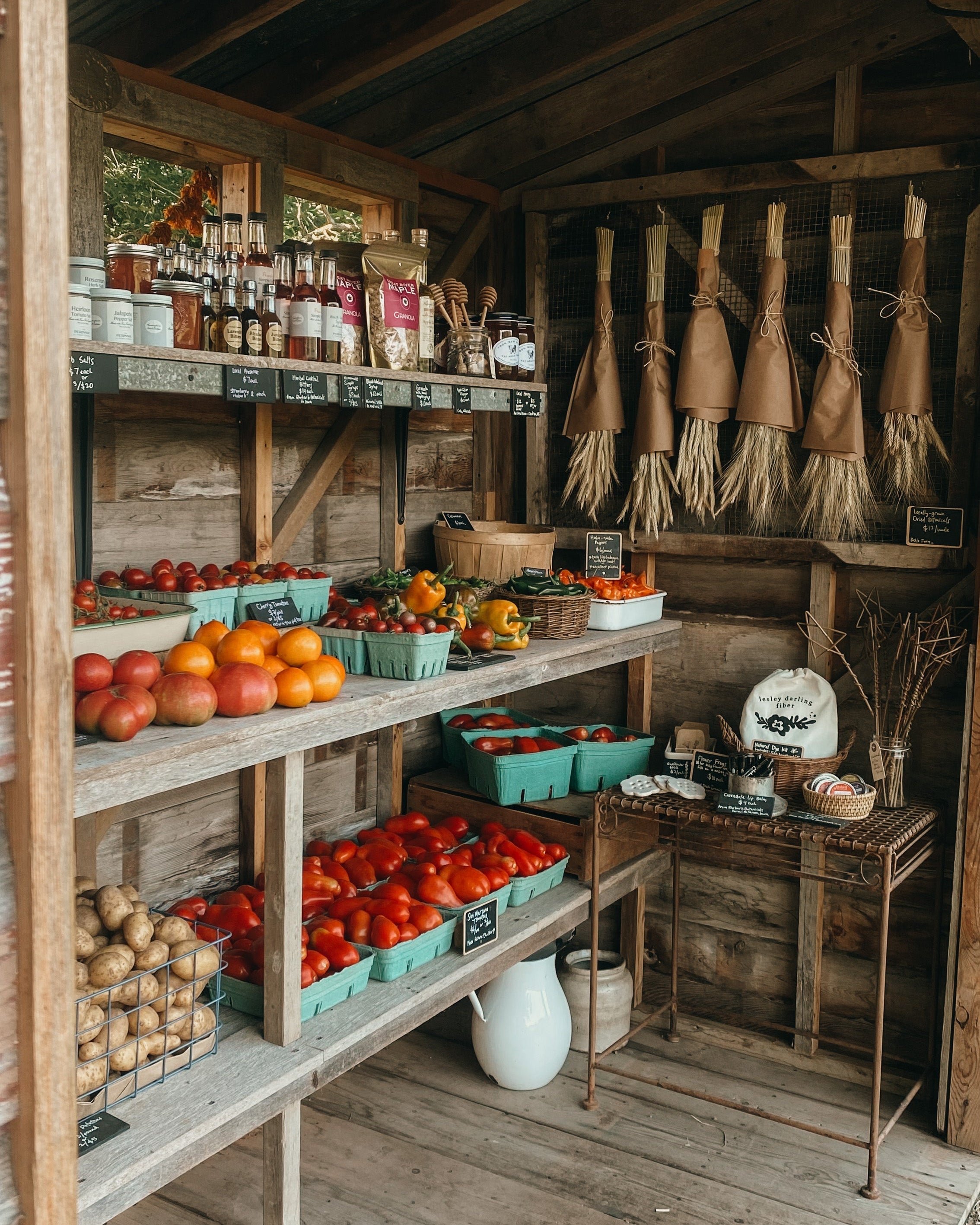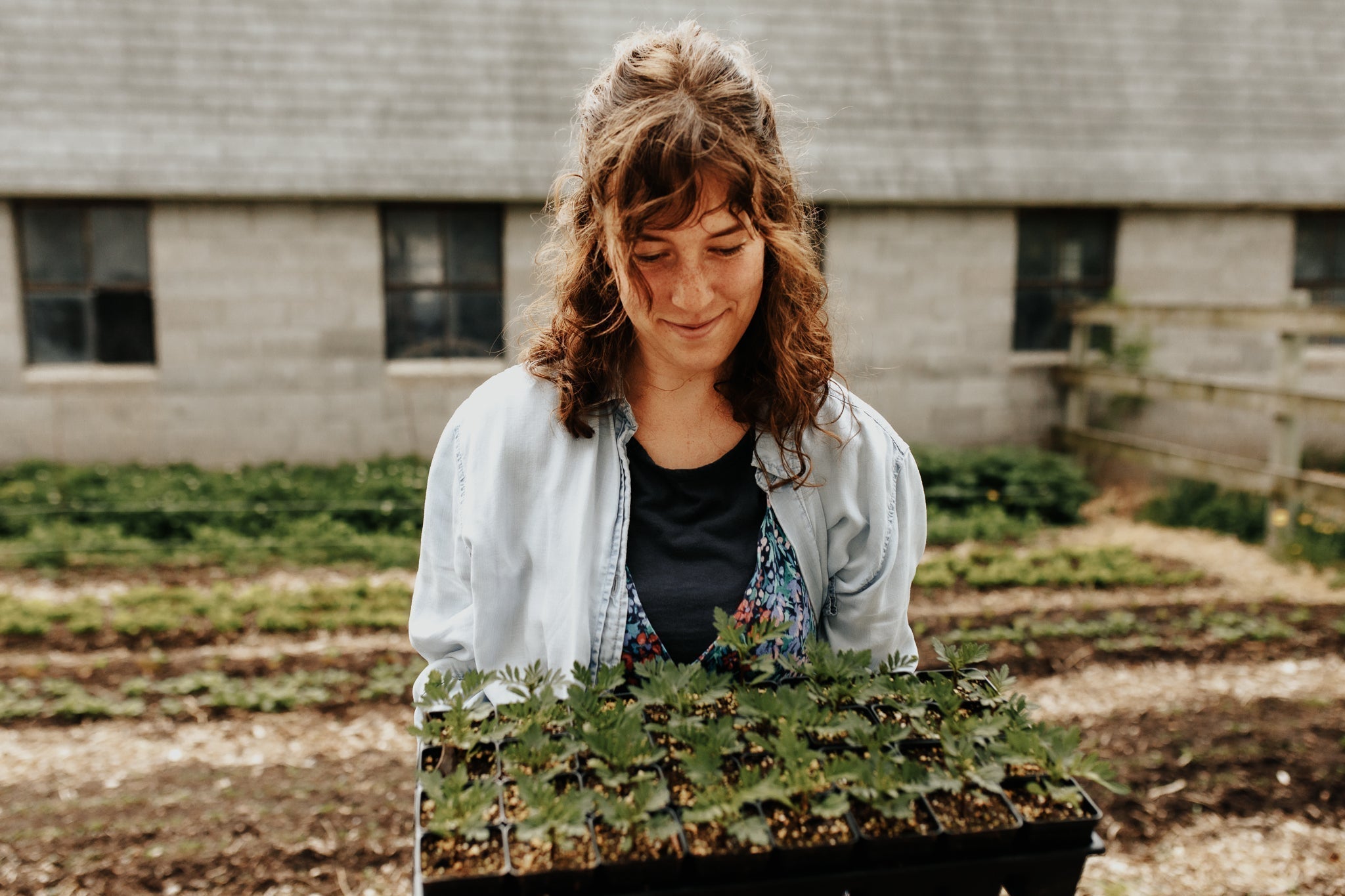Scotty and I have been growing our own garlic together for over ten years together and it’s one of our favorite things to grow. Not only is it super simple to grow, but the flavors and varieties available with homegrown garlic are outstanding compared to store-bought alternatives. We’ve been growing a hard-neck variety for the past ten years, and several years ago, we added a soft-neck variety. Once you’ve grown your own, you can save your own seed for the following seasons, making it a very affordable crop to grow as well!
When to Plant
Planting garlic depends on your what hardiness zone you’re in. We’re located in Omaha, Nebraska which is USDA zone 5b. To find your zone, visit the USDA Plant Hardiness Map here! Hardiness zones are based on first and last frost date averages. In our zone, we plant our garlic around the time of the last frost date (average of October 15th) and before the ground is frozen. There is some flexibility in the planting time, and we’ve planted as late as the weekend before Thanksgiving!
Choosing a Variety
There are many varieties of garlic, but they are broadly categorized into two types: Soft-neck and Hard-neck.
Soft-neck Garlic
There are two main categories of soft-neck garlic: artichoke and silverskin. Soft-neck varieties are the most common varieties found in grocery stores and at farmers' markets as they have a longer storage life and tend to have a milder flavor than most hard-neck varieties. They tend to have more cloves of smaller size, making them a little more difficult to peel. Soft-neck varieties are most commonly used for making garlic braids!
Hard-neck Garlic
Hard-neck varieties are split into three main categories: rocambole, continental, and Asiatic. Rocambole is the most popular in this category, producing fairly symmetrical heads of garlic. Hard-neck varieties also produce garlic scapes in the spring, which can also be harvested and eaten! Scapes are an upright shoot that grows from the center of the plant and are often removed in the spring to promote larger growth in the garlic cloves. We use garlic scapes to make our Basil Garlic Finishing Salt.
Seed Garlic Sources
Often, you’ll have to order your seed garlic in mid- to late-summer. Some sources may be out of stock when it’s time to plant, so in that case, contact your local farmers to see if they have any extra seed. Unless you’re growing a huge amount, this can be a great way to get seed garlic, since often times they’ll have smaller quantities. Avoid planting garlic from the grocery store, as it is often treated for shelf stability, and this may affect its viability.
-
Grade A Gardens - Organically grown in Johnson, Iowa
-
Filaree Garlic Farm - Organically grown in Omak, Washington - one of the premier garlic farms in the country!
-
Hudson Valley Seed Company - Grown in Hudson Valley, New York
Planting Garlic
Preparing Your Garden Bed
Prepare your garden bed by cultivating the soil so you can easily plant the cloves 3” deep. Add about 1” of compost to the top of the bed and smooth with the back of a rake.
Mark your rows about 10-12” apart. We plant three rows per bed, so that we can easily reach the center row for weeding in the spring.
Preparing Your Cloves
Each clove of garlic will produce its own garlic plant and subsequently its own head of garlic! A garlic clove is a plant, not a seed, so the orientation of the clove is important for planting - you will plant each clove with the “stem-base” down, as this is where the clove will grow roots in the spring and from it will grow leaves upright.
To separate your cloves from the head of seed garlic, use your thumb to gently brush off the outer layers of skin to reveal the inner cloves. Then, using gentle pressure, “pop” off the cloves. You want to be careful not to damage the cloves, as this can promote disease. Handle cloves like eggshells, not tennis balls! Additionally, you’ll want to plant the cloves within 48 hours of removing them from the head of garlic, so don’t pop them off before you’re ready to plant. Cloves will begin to dehydrate after they have been removed and this will affect the strength of the cloves to grow into a healthy bulb in the spring!
Select medium to large cloves that are undamaged, setting aside damaged or small cloves for eating later.
Planting Your Cloves
Plant each clove with the stem-base down about 3” into the soil. Plant cloves 6-8” apart in each row, with rows about 10-12” apart. Once all of your cloves are planted, cover gently with soil. Finish by covering with a light layer of mulch about 1” thick. We use fresh straw or fallen leaves to cover ours!
Further Reading
-
Growing Great Garlic, by Ron L. England, Filaree Productions - (we proudly carry it in our online shop!)




